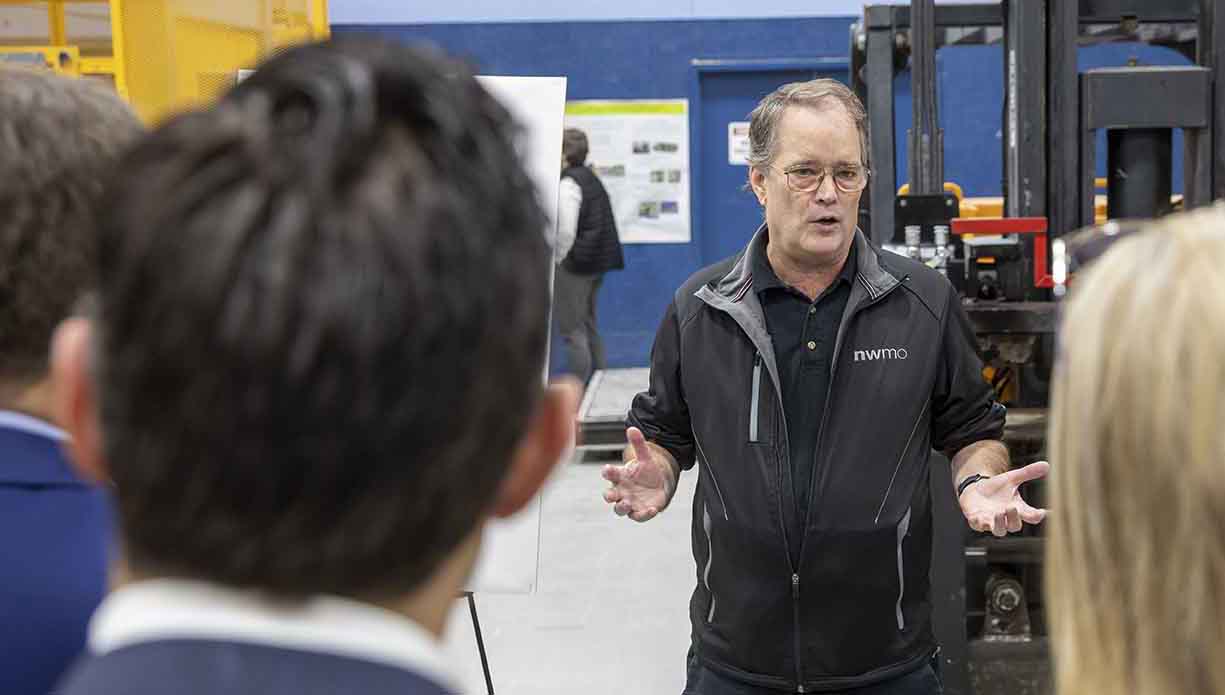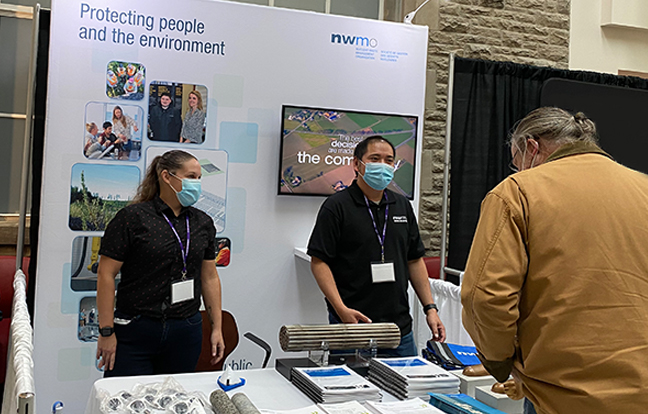Organizational readiness
During the period from 2020 through 2022, we focused on ensuring the NWMO has the resources we need to carry out our responsibilities in advance of site selection in 2024, and that we will be ready to undertake the many new activities that will follow. This includes having the right people, in the right jobs, at the right time. It also means giving them the training and support they need, and ensuring we continue to put safety first in everything we do. After a site is selected, there will be increased activity in the local and regional area. It will also mark the beginning of a multi-phase organizational transformation for the NWMO.
Human resources
Like all organizations in 2020, the NWMO had to quickly adapt to the pandemic so our employees could continue to work safely. Through technical and training resources, employees effectively transitioned to remote work and online collaboration. Our Human Resources team was instrumental in managing the impacts of the rapid changes, and developed several processes, new safety governance and the introduction of a hybrid work model that brought employees back into the offices in October 2021.
This new hybrid work environment allows most employees to work from home up to two days per week, helping employees manage work while balancing other personal demands. During this time of variability between in-office and remote work, our Human Resources team continued to provide staff and supervisors with employee relations support and workplace coaching, and directed them to essential resources to support their mental and overall health.
Through these measures and the commitment of the NWMO’s staff, contractors and advisors, we were able to maintain operations and continue preparing for the new phase that will begin when a site for the repository is selected in 2024.
To support existing work and prepare for this next phase, our Human Resources team ramped up staff recruitment with a strong focus on increasing diversity, specifically in areas of underrepresentation. 123 new employees were hired over the past three years, including full-time, long-term contract and temporary positions. Of these new hires, 47 per cent of STEM (science, technology, engineering and mathematics) vacancies were filled by women, 7 per cent identified as Indigenous (with 2 per cent hired into roles not related to Indigenous engagement or relations), and 31 per cent were visible minorities. We hired many of these employees directly in the potential host communities and filled approximately 50 summer student and intern positions, which are an important way we engage youth and develop the skills capacity needed to support this multi-generational project.
In early 2020, after 18 months of work, we implemented the Human Capital Management phase of the NWMO’s Enterprise Resource Planning System, which includes a central employee database and record system, payroll and finance interface, time and attendance tracking, performance management, process workflow and an applicant tracking system to support our recruitment activities.
During the 2020 to 2022 period, important changes were made to our organizational structure to align resources with expanding areas of work and to support business plans. This resulted in an increase of staff and several promotions. Creating opportunities for career growth and development will continue to be a key retention tool as we move closer to transitioning operations to the selected site.
The NWMO’s President and CEO signed on to the Electricity Human Resources Canada Leadership Accord, a public commitment to promote gender diversity within the organization, and committed to the Clean Energy Education and Empowerment Initiative’s Equal by 30 campaign, a pledge to advance gender equality in the energy sector by 2030.
Throughout the past three years, we have advanced our Inclusion, Diversity and Equity initiatives to foster a safe and inclusive environment for employees, free from discrimination, harassment and violence, and to ensure our workforce is representative of the available labour market. We created short- and long-term diversity and inclusion goals and targets and are proud of our strong representation of women, Indigenous peoples and visible minorities in the workforce (43 per cent, 8 per cent, and 29 per cent respectively).
We trained our employees in diversity and inclusion fundamentals and unconscious bias. We also participated in two industry surveys to track and improve diversity, inclusion and intersectionality within the workplace. Intersectionality is a concept that describes how systems of inequality based on gender, race, ethnicity, sexual orientation, gender identity, disability, class and other forms of discrimination overlap to create unique dynamics and effects.
We further developed new governance and training related to changes to the Canada Labour Code to prevent workplace harassment and violence, consistent with other emerging changes to federal legislation. We also completed our annual reviews and revisions of the NWMO’s Code of Conduct.
To further support these actions, two of our governing documents – our Recruitment Procedure and our Whistleblower Policy/Procedure – underwent a Reconciliation review to ensure Human Resources governance considers and incorporates Indigenous Knowledge into its practices.
Continuing to build a learning organization
Canada’s plan will be implemented over several generations and will continue to evolve. That means as an organization, we also need to be good at adapting, transferring knowledge and transforming our culture for different phases of work. An essential element of that culture is continuous learning.
During the 2020 to 2022 period, we have improved our ability to manage our learning and development process through enhanced governance and integrated scheduling and by creating a one-stop shop for learning through a platform for employees, called NWMO-University.
We also ramped up the breadth and depth of our training. In 2022 alone, we delivered more than 100 training sessions to more than 250 staff, with staff attending 11 training sessions on average. We also enhanced the ability for staff to self-direct their learning and development through the introduction of self-serve training in NWMO-University. We have also piloted a skills-based coaching program to support staff in strengthening skills.
Mobilization
Even now, in the early stages of implementation, the work associated with Canada’s plan employs approximately 630 people – about 230 of these are directly employed by the NWMO, and about 400 are working to support the communities’ participation, the technical program and engagement work.
Over the past three years, we continued to advance the NWMO’s workforce planning and mobilization strategy for the post–site-selection phase, when we will begin transitioning our operations to the site. Mobilization will be a significant undertaking and will mark an important step in our transformation through to the next project phase.
The NWMO is committed to careful advanced planning to minimize disruption to our staff and the communities we work with. Mobilization will also be an exciting opportunity for change and to implement community partnerships. Our mobilization plan is designed to ensure qualified, competent staff are trained and available to work in whichever area is selected to host the repository, in accordance with operational needs and community readiness.
The mobilization plan takes into consideration our collective agreements and human resources policies and procedures, so that we can work optimally in a new environment in the selected host area. Throughout this process, our Mobilization Information Team has continued to provide a forum for employee questions and information sharing relative to mobilization.
The NWMO seeks to maximize job opportunities in the local municipality and surrounding region, including First Nation and Métis communities, and to build capacity in communities through investments in training and education.


